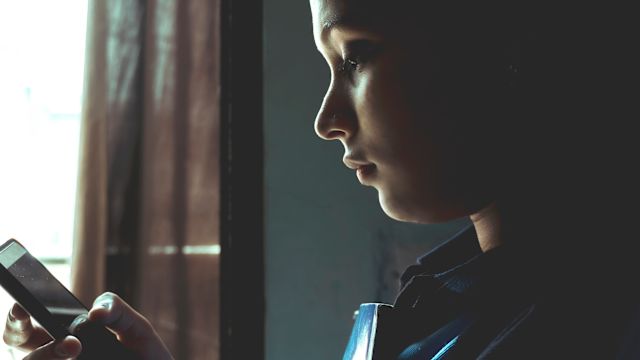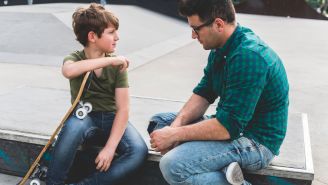Updated on January 17, 2023.
The numbers are staggering. About one in four women will experience severe intimate partner violence (IPV) over the course of her lifetime, according to the National Coalition Against Domestic Violence. For men? The number is one in seven.
Often referred to as domestic violence, IPV is abuse within a romantic relationship. This abuse can be physical, sexual, psychological, or financial—or any of them combined.
“What we're talking about when we talk about partner abuse are issues of power and control,” says Helen Atkinson-Barnes. She’s the Prevention Education Program Director at The Retreat, a nonprofit organization located in East Hampton, New York, that provides comprehensive services for victims of domestic violence and sexual assault. “It’s one person hurting the other person in order to maintain that dominance, just to get their way in that relationship,” she explains.
People in abusive relationships often experience long-lasting health effects. They may develop heart, reproductive, or digestive problems, for example. Depression and post-traumatic stress disorder (PTSD) are common. They’re more likely to engage in risky behaviors, too, like smoking and drinking to excess. Sometimes IPV can have fatal consequences; more than half of women who are murdered in the United States each year are killed by a partner.
If you or someone you know is experiencing IPV, it’s important to get help. Here’s how to start.
Getting ready to leave
There is no right or wrong way to escape an abusive partner. In some cases, it’s a gradual process—a planned exit played out over time. In other situations, it’s a snap decision made after a particularly traumatic incident. Often, people set out and return to abusive partners multiple times before finally leaving for good.
“There are a lot of nuances to how somebody chooses to leave and what their choices are,” says Atkinson-Barnes. “They may be feeling afraid, hurt, controlled, or confused and need support and connection.”
If you are considering or have decided to leave, it’s important to protect yourself throughout the process. For this reason, many domestic violence organizations recommend creating a safety plan ahead of time, if possible.
This is a customized strategy to help protect you in your current situation and ensure you have a blueprint for escape—one that can be followed during moments of crisis. Your safety plan can include a place to go, support systems to contact, and copies of documents. It may also entail having a bag prepped for when you leave.
You can find safety plan resources online. Both the National Coalition Against Domestic Violence and the U.S. Department of Veterans Affairs (VA) offer guides. Many domestic violence organizations have advocates who can help you create a strategy, as well.
“We often advise people to start with counseling or legal advocacy, to do safety planning before they pack up and leave, if that's the right step,” says Atkinson-Barnes. “Sometimes leaving can trigger even greater violence, and navigating that is something that we want to help our clients understand.”
Resources available to you
Fortunately, there are abundant local and national resources for people fleeing abusive relationships. These range from online chats to food aid to long-term housing assistance. What you choose to access can depend on your current situation, comfort level, and needs.
Emergency services
If you are in imminent danger, leave right away if possible and dial for help as soon as you can. You can also head to a local emergency room for assistance. “If it is an emergency crisis where you need the police, you should be calling 911 directly,” says Atkinson-Barnes.
A hotline
Dialing a special phone number for help is often the first step for people escaping an abusive situation. Many domestic violence hotlines are available 24/7 and offer help in multiple languages. Advocates can listen, answer questions, help you create a safety plan, and connect you to local resources.
“They'll ask first if you’re safe and then they'll ask for facts, particularly what it is you’re seeking, what the issues are,” says Loretta K. Davis, Executive Director of The Retreat. “They're compassionate and they try to be as helpful as they can.”
Details of hotline calls are kept private. “People can expect confidentiality,” says Atkinson-Barnes. “We have a very, very high standard across the country of understanding the needs for confidentiality.”
Many hotlines are run by local governments or organizations. The Retreat, for example, has its own hotline at 631-329-2200. Other hotlines serve people nationwide, including the following:
- Reach the National Domestic Violence Hotline at 1-800-799-SAFE (7233) or 1-800-787-3224 (TTY). You can also text “START” to 88788 or connect via live chat on the group’s official website.
- Teenagers can get in touch with the National Teen Dating Abuse Helpline by calling 1-866-331-9474, texting “loveis” to 22522, or connecting via live chat.
- The National Sexual Assault Hotline is maintained by the Rape, Abuse & Incest National Network (RAINN). Call 1-800-656-HOPE (4673) or access the live chat online for assistance.
Domestic violence shelters
Shelters provide temporary, safe housing and basic amenities for people in abusive relationships, and usually, their children. They’re typically locally run, open 24/7, and can be accessed during an emergency.
Many organizations, including The Retreat, run a shelter as part of a wider range of services. Offerings vary by agency, but often include:
- Counseling and support groups
- Legal services
- Job training and employment help
- Childcare
- Help with financial aid
- Provision of food and personal goods
Usually, these services are offered at no cost. “A lot of our clients come from marginalized populations,” says Davis. “There's usually financial abuse, so they often don't have any money.” She explains that services at The Retreat are free to ensure there are no barriers to access for anyone.
Many organizations also focus on helping people build independence in the long term. “The clients may have their own goals, but our goals are to help them, to remove them from an unhealthy situation, and to help them have independent, sustainable lives,” says Davis.
You can find shelters by reaching out to a healthcare provider, dialing a domestic violence hotline, or searching DomesticShelters.org. If you’re a military veteran, the VA offers resources via the Intimate Partner Violence Assistance Program (IPVAP).
Getting help in the era of COVID-19
Since the pandemic has changed certain aspects of our day-to-day lives, you may worry that a call for help would go ignored. Abusers may even try to feed off this fear.
“Users and abusers and perpetrators can give misinformation like, ‘Oh, no one's going to help you. Oh, they're closed,” says Davis.
But it’s important to understand: You should never hesitate to reach out if you are experiencing IPV. Many organizations made accommodations to continue delivering services and safe haven during the pandemic. They launched remote counseling sessions, for example.
“We adapted quickly and we've been able to provide services—and clients are satisfied with those services,” Davis says of The Retreat. She adds that The Retreat has never closed, even for a day. The organization also helps everyone who needs it, including people who are undocumented.
“There is hope and there is help. And it’s free.”






